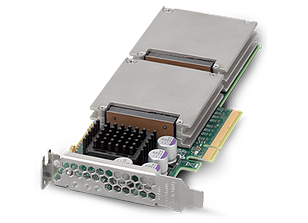But first, a mea culpa:
In 2008, I Was An Idiot
Back in early 2008, I wrote a blog entry comparing Collaborate, Kaleidoscope, and OpenWorld. In this entry, I said that Collaborate was the obvious successor to the Hyperion Solutions conference and I wasn't terribly nice to Kaleidoscope. Here's me answering which of the three conferences I think the Hyperion community should attend (I dare you to hold in the laughter):Now which one would I attend if I could only go to one?Collaborate. Without reservation. If I'm going to a conference, it's primarily to learn. As such, content is key.I actually got asked a very similar question on Network 54's Essbase discussion board just yesterday (apparently, it's a popular question these days). To parrot what I said there, OpenWorld was very, very marketing-oriented. 80% of the fewer than 100 presentations in the Hyperion track were delivered by Oracle (in some cases, with clients/partners as co-speakers). COLLABORATE is supposed to have 100-150 presentations with 100+ of those delivered by clients and partners.In the interest of full-disclosure, my company, interRel, is paying to be a 4-star partner of COLLABORATE. Why? Because we're hoping that COLLABORATE becomes the successor to the Solutions conference. Solutions was a great opportunity to learn (partying was always secondary) and I refuse to believe it's dead with nothing to take it's mantle. We're investing a great deal of money with the assumption that something has to take the place of Hyperion Solutions conference, and it certainly isn't OpenWorld.Is OpenWorld completely bad? Absolutely not. In addition to the great bribes, it's a much larger conference than COLLABORATE or ODTUG's Kaleidoscope, so if your thing is networking, by all means, go to OpenWorld. OpenWorld is the best place to get the official Oracle party line on upcoming releases and what not. OpenWorld is also the place to hear better keynotes (well, at least by More Famous People like Larry Ellison, himself). OpenWorld has better parties too. OpenWorld is also in San Francisco which is just a generally cooler town. In short, OpenWorld was very well organized, but since it's being put on by Oracle, it's about them getting out their message to their existing and prospective client base.So why aren't I recommending Kaleidoscope (since I haven't been to that either)? Size, mostly. Their entire conference will have around 100 presentations, so their Hyperion track will most likely be fewer than 10 presentations. I've been to regional Hyperion User Group meetings that have more than that (well, the one interRel hosted in August of 2007 had 9, but close enough). While Kaleidoscope may one day grow their Hyperion track, it's going to be a long time until they equal the 100-150 presentations that COLLABORATE is supposed to have on Hyperion alone.If you're only going to one Hyperion-oriented conference this year, register for COLLABORATE. If you've got money in the budget for two conferences, also go to OpenWorld. If you're a developer that finds both COLLABORATE and OpenWorld to be too much high-level fluff, then go to Kaleidoscope.
In 2008, Mike Riley Luckily Wasn't An Idiot
Hyperion users are blessed with many training opportunities. I agree with Edward, the primary reason for going to a conference is to learn, but I disagree that Collaborate is the best place to do that. ODTUG Kaleidoscope, Collaborate, and OpenWorld all have unique offerings.Mike was only in his second year as a board member of ODTUG, but he was willing to put himself out there, so I wrote him an e-mail back. In that e-mail, dated February 10, 2008, I said that for Kaleidoscope to become a conference that Hyperion users would love, it would require a few key components: keynote(s) by headliner(s), panels of experts, high-quality presentations, a narrow focus that wasn't all things to all people, and a critical mass of attendees.
It’s true that ODTUG is a smaller conference, however that is by choice. At every ODTUG conference, the majority of the content is by a user, not by Oracle or even another vendor. And even though Collaborate might seem like the better buy because of its scale, for developers and true technologists ODTUG offers a much more targeted and efficient conference experience. Relevant tracks in your experience level are typically consecutive, rather than side-by-side so you don’t miss sessions you want to attend. The networking is also one of the most valuable pieces. The people that come to ODTUG are the doers, so everyone you meet will be a valuable contact in the future.
It’s true, COLLABORATE will have many presentations with a number of those delivered by clients and partners, but what difference does that make? You can’t attend all of them. ODTUG’s Kaleidoscope will have 17 Hyperion sessions that are all technical.
In the interest of full disclosure, I have been a member of ODTUG for eight years and this is my second year as a board member. What attracted me to ODTUG from the start was the quality of the content delivered, and the networking opportunities. This remains true today.
I won’t censor or disparage any of the other conferences. We are lucky to have so many choices available to us. My personal choice and my highest recommendation goes to Kaleidoscope for all the reasons I mentioned above (and I have attended all three of the above mentioned conferences).
One last thing; New Orleans holds its own against San Francisco or Denver. All of the cities are wonderful, but when it comes to food, fun, and great entertainment there’s nothing like the Big Easy.







